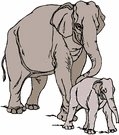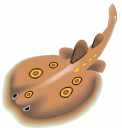
Worksheets and No Prep Teaching Resources
Reading Comprehension Worksheets
Animal Themes
Fish

Animal Themes
 Worksheets and No Prep Teaching Resources Reading Comprehension Worksheets Animal Themes Fish |
 Animal Themes |
| edHelper's suggested reading level: | grades 6 to 8 | |
| Flesch-Kincaid grade level: | 7.53 |
| Mudskippers |

|
 1 Mudskippers are small (up to 12 inches in length) but extremely unusual. Though they may not be as ferocious as great white sharks, as big as ocean sunfish, as colorful as clown fish, or as speedy as tuna, they possess one forte that none of these fishes have. That specialty is to stay out of water!
1 Mudskippers are small (up to 12 inches in length) but extremely unusual. Though they may not be as ferocious as great white sharks, as big as ocean sunfish, as colorful as clown fish, or as speedy as tuna, they possess one forte that none of these fishes have. That specialty is to stay out of water! |
Create Weekly Reading Books
Prepare for an entire week at once! |
| Leave your feedback on Mudskippers (use this link if you found an error in the story) |
 |
Animal Themes
|
 |
Fish
|
|
|